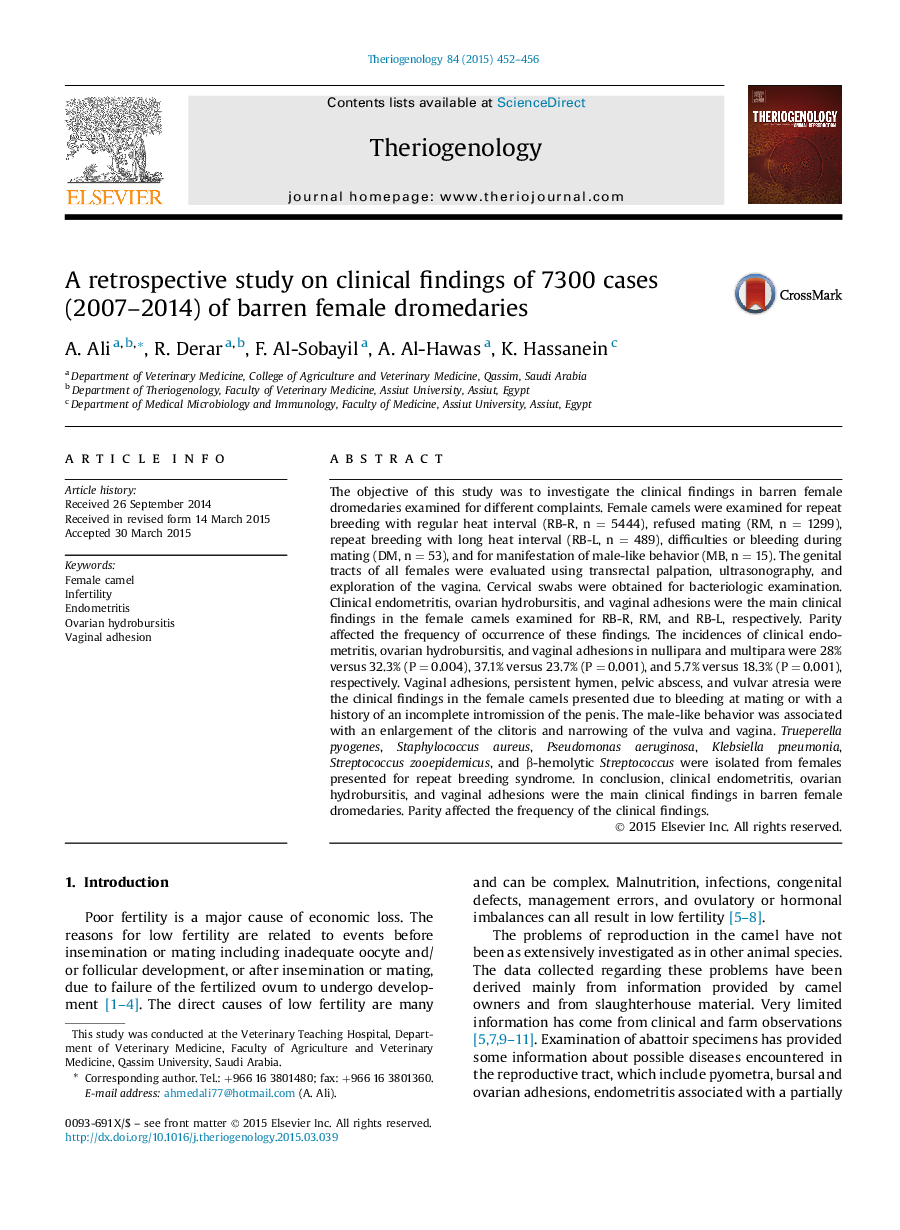| Article ID | Journal | Published Year | Pages | File Type |
|---|---|---|---|---|
| 10891937 | Theriogenology | 2015 | 5 Pages |
Abstract
The objective of this study was to investigate the clinical findings in barren female dromedaries examined for different complaints. Female camels were examined for repeat breeding with regular heat interval (RB-R, n = 5444), refused mating (RM, n = 1299), repeat breeding with long heat interval (RB-L, n = 489), difficulties or bleeding during mating (DM, n = 53), and for manifestation of male-like behavior (MB, n = 15). The genital tracts of all females were evaluated using transrectal palpation, ultrasonography, and exploration of the vagina. Cervical swabs were obtained for bacteriologic examination. Clinical endometritis, ovarian hydrobursitis, and vaginal adhesions were the main clinical findings in the female camels examined for RB-R, RM, and RB-L, respectively. Parity affected the frequency of occurrence of these findings. The incidences of clinical endometritis, ovarian hydrobursitis, and vaginal adhesions in nullipara and multipara were 28% versus 32.3% (P = 0.004), 37.1% versus 23.7% (P = 0.001), and 5.7% versus 18.3% (P = 0.001), respectively. Vaginal adhesions, persistent hymen, pelvic abscess, and vulvar atresia were the clinical findings in the female camels presented due to bleeding at mating or with a history of an incomplete intromission of the penis. The male-like behavior was associated with an enlargement of the clitoris and narrowing of the vulva and vagina. Trueperella pyogenes, Staphylococcus aureus, Pseudomonas aeruginosa, Klebsiella pneumonia, Streptococcus zooepidemicus, and β-hemolytic Streptococcus were isolated from females presented for repeat breeding syndrome. In conclusion, clinical endometritis, ovarian hydrobursitis, and vaginal adhesions were the main clinical findings in barren female dromedaries. Parity affected the frequency of the clinical findings.
Keywords
Related Topics
Life Sciences
Agricultural and Biological Sciences
Animal Science and Zoology
Authors
A. Ali, R. Derar, F. Al-Sobayil, A. Al-Hawas, K. Hassanein,
